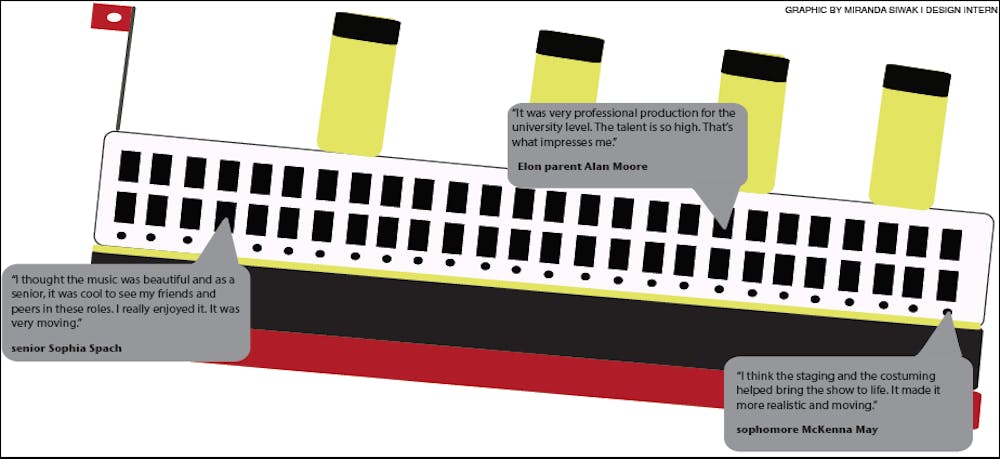For those looking to attend “Titanic: the Musical” to get a glimpse of Jack Dawson or that famous “French girls” drawing scene, they will be sorely disappointed. James Cameron’s epic film and this musical may share a setting, but the similarities end there. But stick around, and you will find yourself dazzled by a breathtaking score, the emotional depth of the performers and a story that is timeless despite its familiarity.
The immediate standout of this show is the music. The score is reflective not of the action of the show but rather the emotional state of its characters. Most of Act I’s songs possess whimsy and a dazzling hope at the privilege of sailing on such a monumental ship.
By Act II, while some songs (“Wake Up, Wake Up!”) carry that fearful edge as the crew members rouse the passengers, others (“Dressed in Your Pajamas in the Grand Salon”) reflect the oblivion and partial denial of the passengers who would not understand the severity of the tragedy until it is too late.
In this way, the audience is treated as another passenger — the audience members know what will happen, but the music sweeps them into a place where they truly believe that these characters may get what they want.
The characters become the audience’s guides and friends throughout the span of the musical, and each presents something anyone can connect to.
The audience follows second-class passenger Alice Beane’s girlish excitement to be within arm’s reach of billionaires, Ida Strauss’ stubborn loyalty to her husband that leads to her death, and First Officer Murdoch’s immeasurable guilt that maybe he, the highest ranking officer at the time of the crash, could have done something different.
The characters play at the audience’s own hopes and fears, making it that much harder to see some of them go.
Condensing an 882-foot ocean liner to fit on McCrary Theatre’s stage is a daunting feat, but the designers of “Titanic” pulled it off gracefully. They designed a large outer wall, which moved either to focus the drama on the captain’s deck or to reveal the happenings within decks of the various classes aboard.
What’s difficult as an audience member for this show is the pre-existing knowledge. From one of the first scenes, when White Star Line chairman J. Bruce Ismay talks about making headlines, the audience audibly groaned, because they all knew where this voyage was headed.
That doesn’t stop “Titanic’s” enthusiastic cast from drawing you in and making you believe in their dreams of rising above their station for a better life in America.
Only when you take a minute to think does it hit you again that many of these same charming characters won’t make it.
This voyage is a clear metaphor for the American dream. America is that great beacon that welcome the cast to better days, and after seeing the irrepressible hope of these characters, it’s devastating to see their dreams slip away as the ship goes under.
The musical relies on the emotional devastation: families being separated by the life boats, the Strausses proclaiming their love for each other in the face of imminent death and the three leading men — chairman Ismay, shipbuilder Thomas Andrews and Captain E.J. Smith — fighting about who is to blame.
It may not be as potent as actually seeing people drown, but after the emotional investment put into the characters throughout the show, these little moments are enough for the audience.
“Titanic” leaves the audience with one final scene. The survivors reprising the opening song — words once full of hope and promise, now hollowed from tragedy — as a running list of lives lost are projected onto them.
Those aboard the Titanic show the audience victims of tragedies are more than names, and we should be careful to remember that when we depart from this journey.


